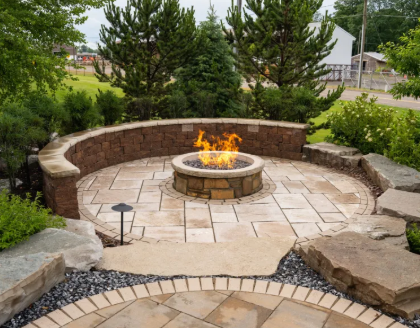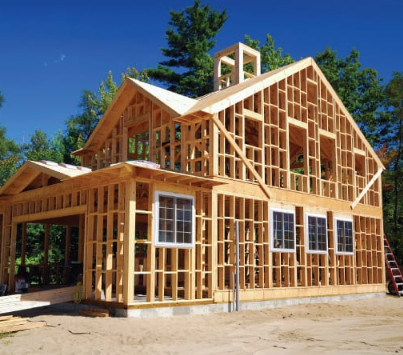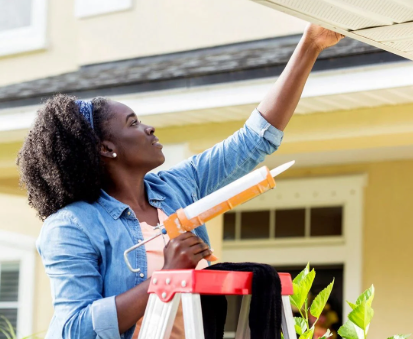Buying a pre-owned home can feel exciting and scary. A home inspection helps you avoid costly surprises later.
In the United States, many homes listed for sale are pre-owned. After you move in, patching and repairs are hard to avoid. This article explains in detail why the home inspection step is crucial.
A home inspection (Home Inspection) is one of the key contingencies (Contingency) in an offer/contract. After both parties sign and the contract is ratified (Contract Ratified), the first thing a buyer should do is hire a licensed home inspector (Home Inspector). The inspection fee is paid by the buyer and generally runs a few hundred dollars, varying with the home’s price—the higher the price, the higher the fee. In certain special cases, the step can be waived by mutual agreement.
A typical inspection takes about two to three hours. Buyers should accompany the inspector; you will learn a lot. Inspectors explain findings and caution points as they go. The scope includes the structure, foundation, roof, floors, walls, doors and windows, basement, electrical systems, plumbing, heating and air-conditioning systems, smoke detectors, and more. The inspector will produce a detailed report covering the home’s condition, components that may fail, remaining service life, recommended maintenance, etc. In addition to detailed findings, there is usually a summary listing items for the seller to repair. If requested, the inspector can provide rough cost estimates. Good inspectors attach color photos so problems are obvious at a glance.
Within the inspection contingency period (usually seven days), the buyer’s agent drafts a Home Inspection Addendum for the seller’s agent based on the report. Bank-owned properties are typically sold AS IS, with no responsibility for inspection issues; the buyer may either cancel or proceed and repair later. In normal sales, if the home’s primary structure has major defects—e.g., a cracked foundation or collapse risk—the buyer may request to cancel the contract. For other issues, the buyer can ask the seller to repair.
Upon receiving the addendum, the seller has three days to respond—agreeing to repairs or offering equivalent repair credits. Certain items the seller is generally expected to fix if defective or non-functional: structure, foundation, roof, electrical, plumbing, heating and cooling, smoke detectors. Electrical and plumbing issues should be repaired by licensed electricians or plumbers. Other items—e.g., holes in walls, damaged flooring or carpet—are negotiable; if the seller refuses, the buyer may refuse to buy, so both sides usually negotiate. After the seller replies, the buyer also has three days to respond. Once agreement is reached, the inspection contingency is removed. Items the seller agrees to repair must be supported by contractor invoices.
For new construction, the builder generally provides a one-year warranty, so a pre-closing inspection may be unnecessary. It is recommended to schedule an inspection around month ten so any issues can be repaired under warranty. If the backfill around the foundation was mixed with anti-termite chemicals, termites typically do not appear within the first five years (the chemicals’ effective period). New homes may also have vent piping around the foundation; installers may drill through the slab or use a basement sump to connect to the vent, exhausting radon outdoors.
Real estate transactions are highly time-sensitive (Time Is Of The Essence). If the buyer sends notice within a valid period, the seller must respond within three days. After receiving the seller’s response, the buyer must also respond within three days. If either party fails to reply within three days, it is deemed acceptance of the other party’s last terms. Once agreement on each inspection item is reached, agents prepare a final addendum for signature.
Home inspections are typically scheduled five to seven days after contract signing (the exact number is negotiated). The buyer hires—and pays—the inspector and should attend. Beyond professional knowledge, years of experience matter, and tools are important: gas leak detectors, moisture meters, voltage/current testers, etc. The inspection proceeds top-down, inside-out, covering systems, structure, safety, and more. A thorough inspection includes electrical and plumbing, all equipment and appliances, structural elements, safety factors, attic and roof, garage, basement, interior and exterior walls, doors and windows, floors, chimney and fireplace, exterior drainage, landscaping and trees, and so on.
A good inspector should provide a systematic written report at the end, often using a pre-printed checklist. Each item is checked and problems recorded. Below are potential issues, grouped by water, electrical, HVAC, foundation, exterior, and interior for buyers to reference during inspection:
1) Electrical System
Broken Light Fixture — non-functional lighting equipment.Damaged Electrical Outlet — cracked or broken receptacles.
Mal-functional Electrical Receptacle — switched bedroom receptacles that don’t work.
Improper Wiring — incorrect or unsafe wiring methods.
Mismatched Circuit Breakers — panel circuits and breakers not properly matched.
Overloaded Circuits — a breaker should serve a single conductor; two or more conductors on one breaker constitute overloading (double-lugging).
Overheated Circuit Breaker — caused by overload or mismatch between breaker rating and conductor voltage/current.
Corroded Wiring — older homes may have aluminum wiring that oxidizes over time.
Misplaced Panel Box — the panel is hard to locate; in emergencies, delayed access increases risk.
Poorly Grounded Appliances — appliance grounding must be correct to avoid injury.
Poorly Grounded Wiring — a grounding conductor near the water meter or outdoor meter must be well-bonded; remove paint if it covers the contact.
Non-functional GFCI (Ground-Fault Circuit Interrupter) — GFCI outlets near water (kitchens, baths) must work to provide protection.
Tense Electrical Lines — exterior service lines too taut or pressed by tree branches are hazardous.
Uncovered Junction Boxes / Outlets / Switches — all must have proper covers.
Unsafe Spliced Wires — splices outside approved enclosures are unsafe.
Worn Conduit / Sheathing — exterior cable jackets deteriorated from weathering.
2) Plumbing (Supply and Drain)
Bad Water Drip Pan — appliances located above basements (e.g., water heaters, washers, air handlers) should have pans with drains to the exterior; pans can be damaged.
Blocked Spa or Tub Jet — whirlpool tub jets may clog after long periods of disuse.
Broken Sink Sprayer — side sprayers or pull-out faucet diverters may fail.
Corroded Sink Drain — older metal drains (iron/steel) often rust through.
Defective Toilet — frequently used components (often plastic) fail; the rubber flapper ages and allows continuous running, raising the water bill.
Defective Pressure Lines — the main supply line carries high pressure and should be copper; older plastic lines may degrade and fail under pressure.
Draining “Gray Water” — some washers discharge directly outdoors; in most areas this is not allowed and must connect to the sewer.
Faulty Faucet — aerators may clog or be missing.
Faulty Shower Pan — cracks or failed seals cause leakage.
Improper Water Heater Venting / Discharge — the safety/pressure relief valve requires a discharge pipe directed toward the floor; the outlet should be no more than 6 feet above the floor.
Plumbing Leaks — no leaks are acceptable; in seldom-used areas (e.g., basements), test annually by running water for 20 minutes and checking for leaks.
Shower Leak — long-term shower/tub leaks damage subfloors and structure.
Toilet Seal Failure — toilets can loosen over time and leak at the base.
Unprotected Water Heater — improperly located units (e.g., exposed in a garage) can be struck; relocate or protect.
Water Hookup Mistake — hot/cold reversed, or valve orientation incorrect.
Main Water Line Break — leaks can occur between the home and the street meter; even if the meter doesn’t register, repairs are typically the homeowner’s responsibility and cost.
3) Heating & Cooling (HVAC)
Blocked Air-Conditioner Outside Unit — condensers require clear space and level placement.Defective Air Conditioner — shut off power if malfunctioning. Cooling performance should show at least a 12°F supply-air drop versus room temperature; otherwise, refrigerant may be needed.
Faulty Gas Line (Gas Leak) — gas lines serving water heaters, furnaces, and fireplaces may leak—especially at control connections; test with a gas detector.
Loose Air Duct — poor duct connections reduce airflow and raise heating/cooling costs.
Old Insulation — insulation loses effectiveness over time; basement wall insulation may delaminate and require augmentation or replacement.
4) Foundation
Broken Downspouts — damaged downspouts prevent proper drainage and can harm the foundation.Cracked Foundation — hairline cracks up to 1/8 inch can be normal; larger cracks with displacement may be serious—consult a structural engineer.
Failing Foundation — settlement may make doors/windows hard to operate; seek a structural engineer’s evaluation.
Damp Crawl Space — crawl spaces are hard to access; unnoticed water leads to humidity and deterioration.
Foundation Water — basement water intrusion can seriously damage the structure.
5) Exterior
Cracked Mortar — cracked brick-mortar joints suggest uneven loads; consult a structural engineer.Damaged Door Threshold — improper installation may compromise weather resistance and safety.
Damaged Driveway — neglected deterioration can lead to full replacement.
Damaged Swimming Pool Liner — liners may fail after 5–8 years of immersion.
Damaged Roof — typical roof life is around 20 years; hail, snow, and wind can cause damage.
Defective Exterior Siding — cladding can also be damaged like roofing.
Defective Flashing — metal flashings rust over time and cause leaks.
Defective Stucco — watch for spalling or cracking.
Exposed Beams — structural wood (e.g., beams) should not be left exposed; they should be protected by exterior finishes.
Exposed Building Materials — materials left outdoors for over six months lose stability—especially common on new builds.
Exposed Roof Nails — unseated nails allow leaks during rain.
Firewood Attracts Termites — store firewood at least 10 feet away from the house.
Insecure Pool Ladder — loose pool handrails are unsafe.
Leaking Eaves — eave leaks often show as stains on upstairs corner walls.
Loose Roof Shingles — new winter installations can leave brittle shingles poorly fastened; high winds may lift them.
Missing Spark Screen — chimneys should have a cap with mesh to prevent flying sparks and animal entry.
Pool Gate Without Spring — pool-fence gates should self-close automatically.
Poor Awning Pitch — incorrect slope causes water ponding and eventual damage.
Poor Drainage — inadequate grading harms the foundation.
Poor-Pitched Gutter — improper slope or gutter-to-downspout connection impedes drainage.
Poorly Reinforced Roof — roof sagging indicates support issues.
Rusted Gutter — metal gutters can rust through and fail to drain.
Tree Root Damage — if roots damage the foundation, driveways, or sidewalks, consult specialists for solutions.
Malfunctioning Garage Door Opener — safety reverse systems may fail; the door must reverse upon encountering people or objects.
Unprotected Power Lines — tree branches contacting service lines cause hazards; trim them back.
Unsecured Balcony — inadequate support or loose railings create safety risks.
Unsealed Roof Penetrations — any roof-mounted item (e.g., TV antenna) must be well sealed to prevent leaks.
Unsealed Exterior Wood — wood around door/window frames should be caulked/sealed to slow weathering.
Water Leaks and Termites — termites need soil, wood, and water; reducing moisture around the home reduces termite risk.
Worn Downspouts — downspouts at corners are easily damaged, especially on brick homes.
Worn Roof Flashing — deteriorated metal flashings at corners/valleys cause roof leaks.
6) Interior
Blocked Appliance Vent — blocked exhausts reduce efficiency and can be dangerous.Broken Ventilation Fan — failed fans increase indoor humidity and damage finishes.
Broken Window Seal — fogging between double-pane glass indicates failed seals; replace promptly.
Cracked Slab — slab cracks can allow radon or water into the basement.
Defective Oven Thermostat or Clock — common appliance issues.
Improperly Secured Dishwasher — vibration can loosen mounting screws.
Jammed Door — homes stabilize within about a year and a half; some doors need adjustment.
Leaky Dishwasher — active leakage must be repaired.
Poor Crawl-Space Ventilation — inadequate airflow concentrates moisture.
Stuck-Shut Windows — infrequently used windows can seize, especially after painting; test each window for smooth operation.
Wall Moisture — dampness anywhere indicates water intrusion from outside.
Wobbly Ceiling Fan — wobble loosens the mounting base over time and poses a safety risk.
Conclusion
A thorough home inspection gives you confidence and peace of mind. Knowing the house’s condition helps you make smart decisions and avoid unexpected problems later.





